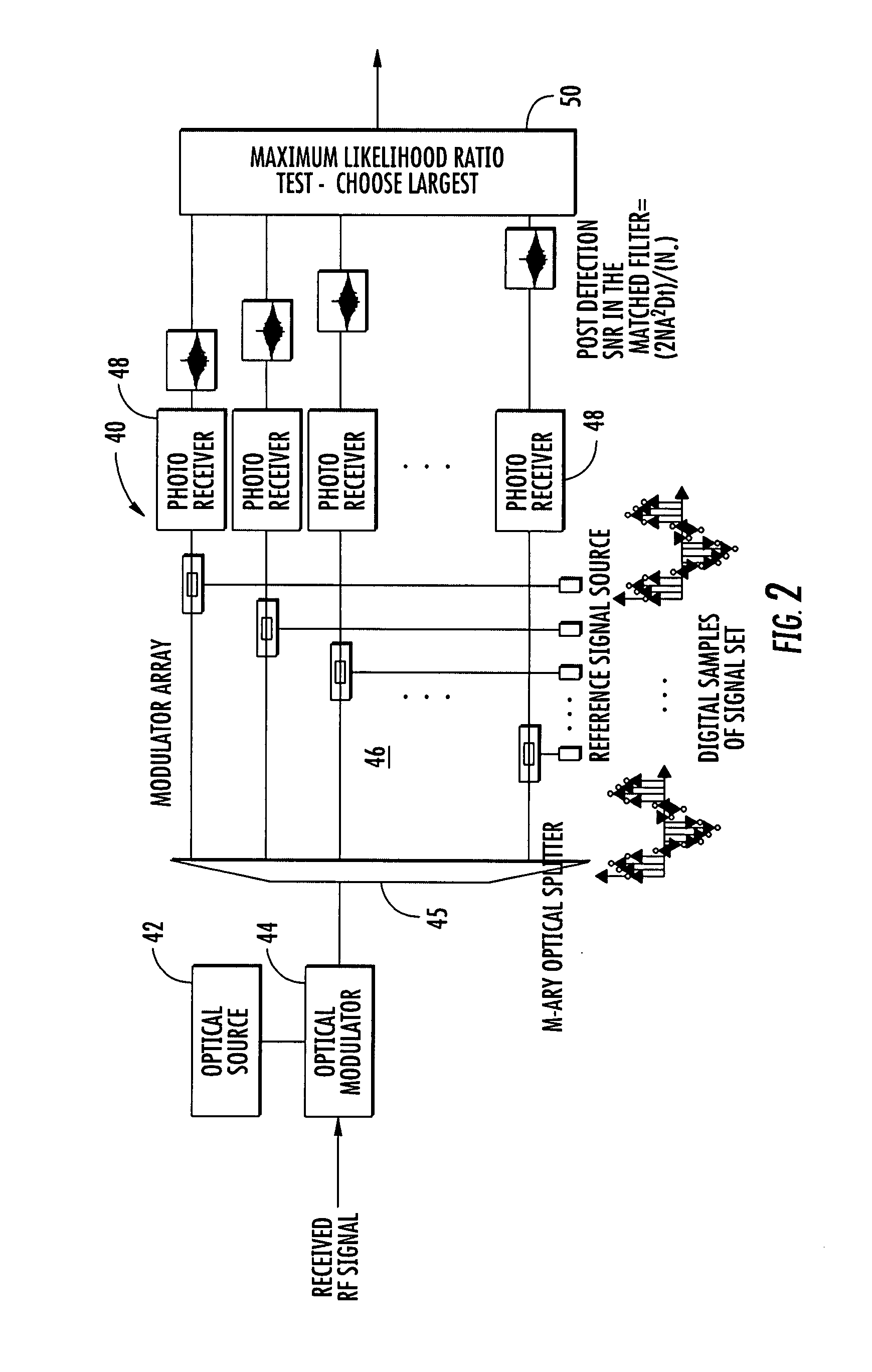Radio frequency (RF) signal receiver using optical processing and associated methods
a radio frequency (rf) and signal receiver technology, applied in the field of wireless communication, can solve the problems of inherently band limited architecture, few dsp fpga's operating at these rates with manageable power dissipation, and the demand for wideband high data rate communications has outpaced the capabilities of analog receivers and dsp processors, so as to reduce sampling rate, increase collection bandwidth in this approach, and high data rate digital processing
- Summary
- Abstract
- Description
- Claims
- Application Information
AI Technical Summary
Benefits of technology
Problems solved by technology
Method used
Image
Examples
Embodiment Construction
[0035]The present invention will now be described more fully hereinafter with reference to the accompanying drawings, in which preferred embodiments of the invention are shown. This invention may, however, be embodied in many different forms and should not be construed as limited to the embodiments set forth herein. Rather, these embodiments are provided so that this disclosure will be thorough and complete, and will fully convey the scope of the invention to those skilled in the art. Like numbers refer to like elements throughout.
[0036]With reference to FIG. 1, a signal receiver 20, such as an RF matched filter receiver, using optical techniques will be described. The RF matched filter receiver 20 provides a cross-correlation between two signals such as an RF signal (e.g. a received RADAR signal) and a reference signal (e.g. a copy of the transmit RADAR signal). The receiver 20 includes an optical source 22 (typically a laser) that produces a continuous waveform or pulsed (e.g. fro...
PUM
 Login to View More
Login to View More Abstract
Description
Claims
Application Information
 Login to View More
Login to View More - R&D
- Intellectual Property
- Life Sciences
- Materials
- Tech Scout
- Unparalleled Data Quality
- Higher Quality Content
- 60% Fewer Hallucinations
Browse by: Latest US Patents, China's latest patents, Technical Efficacy Thesaurus, Application Domain, Technology Topic, Popular Technical Reports.
© 2025 PatSnap. All rights reserved.Legal|Privacy policy|Modern Slavery Act Transparency Statement|Sitemap|About US| Contact US: help@patsnap.com



